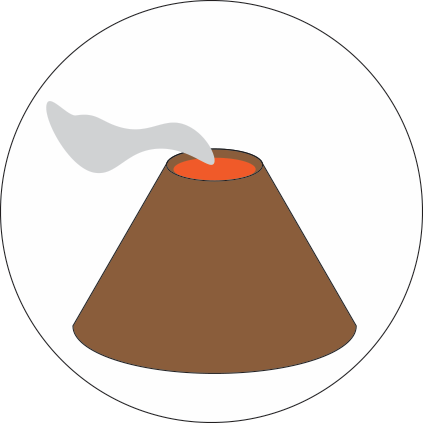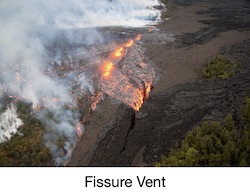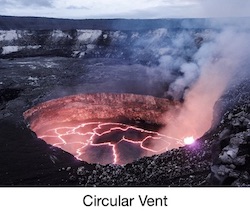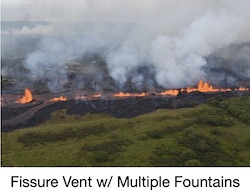
![Kamoamoa Fissure, view looking at the NE end of the actively propagating fissure on 03 Mar 2011 [USGS]](img/ventbanner.jpg)


The site where magma is released out of the Earth is called a vent or crater.
Magma may be erupted either through a single circular vent, or out of an elongated, linear fracture in the Earth's crust, called a fissure.
Fissures can be several kilometers in length, and are common features on shield volcanoes like those found in Hawaii and Iceland.
The images here show examples of circular and fissure style vents.
Fissure eruptions are the dominant type of eruption style for basaltic magmas, especially at tectonic plate boundaries where the plates are moving apart.


When basaltic magma is ejected forcefully, it forms a jet-like fire fountain that can rise very high above the vent or fissure.
During fissure eruptions, the erupting magma may form a continuous curtain of fire fountains along the entire length of the fissure, or the erupting magma may be ejected as a series of separated fire fountains.
The accumulation of molten magma fragments around a vent during fire fountaining activity creates a spatter deposit.